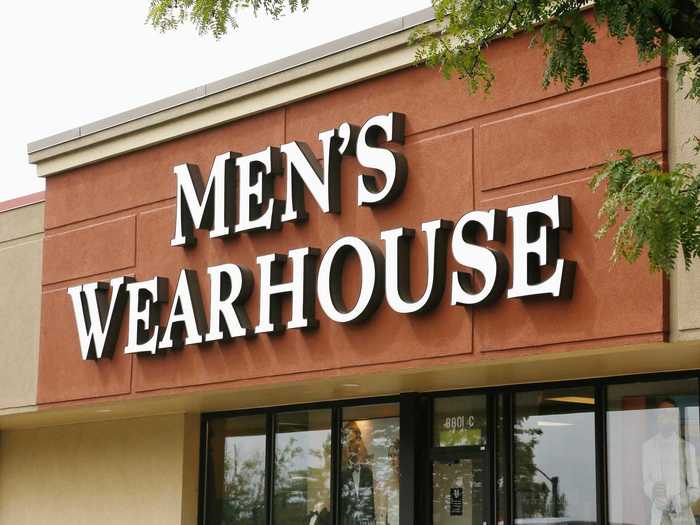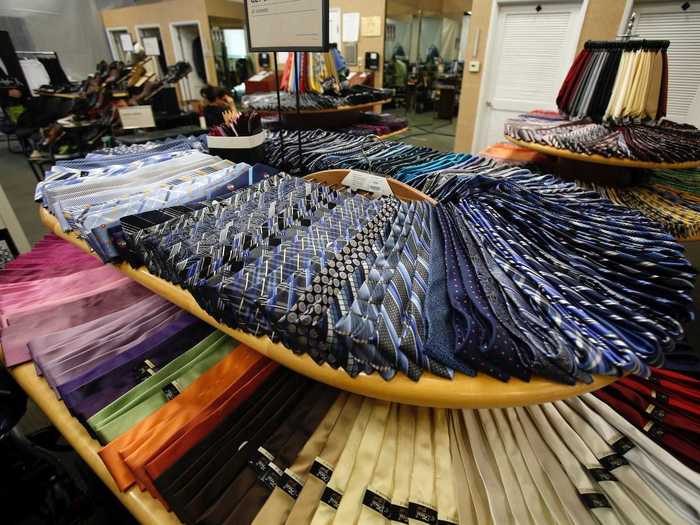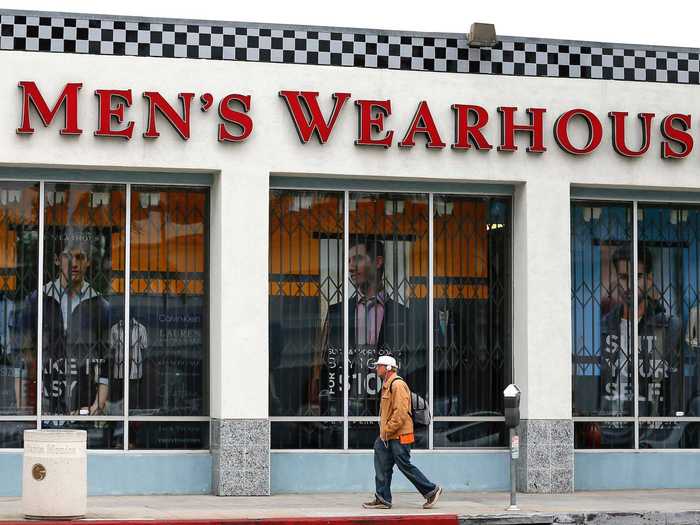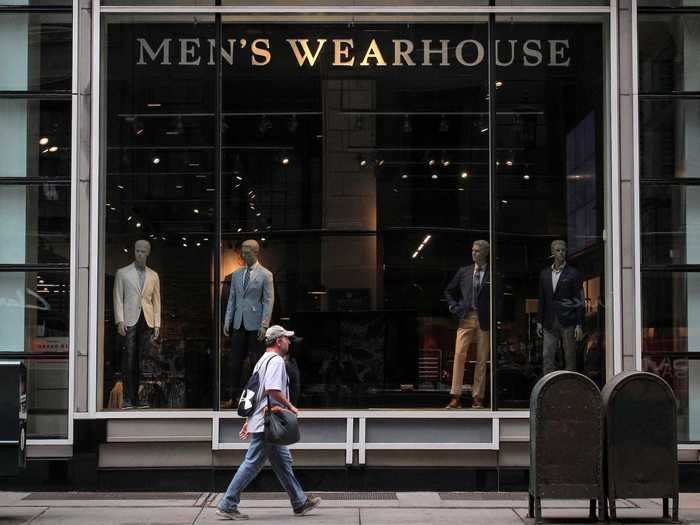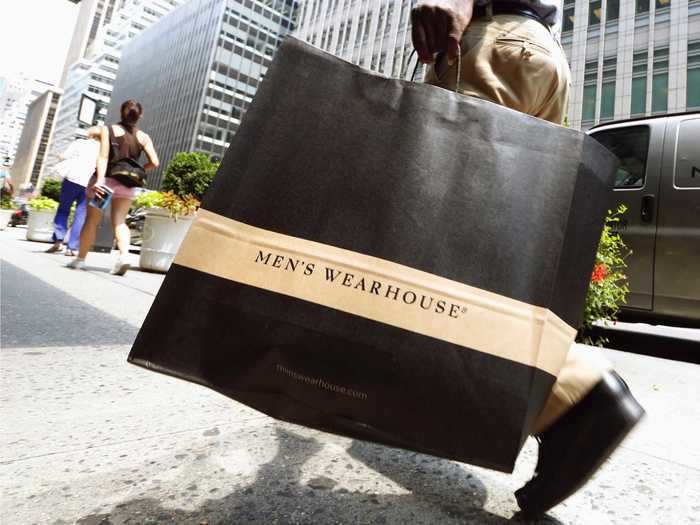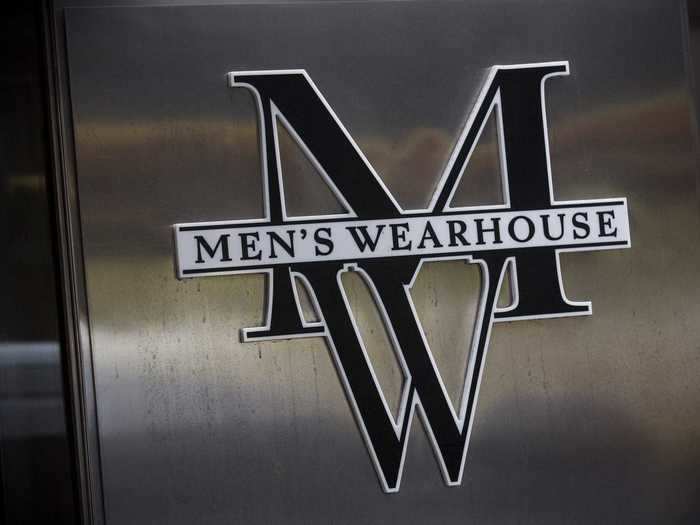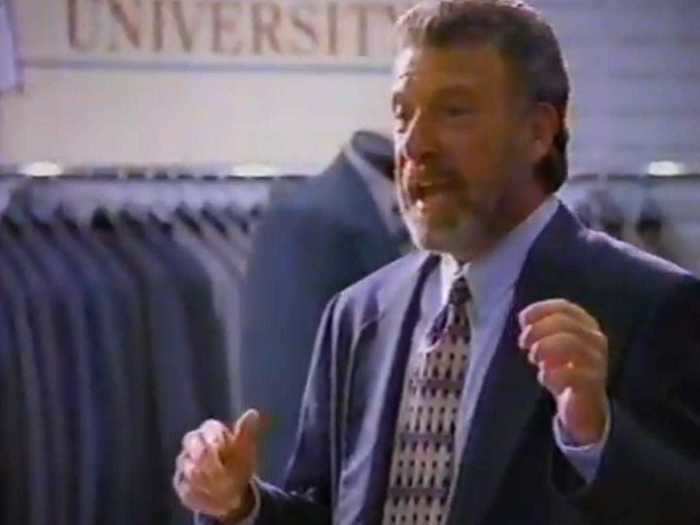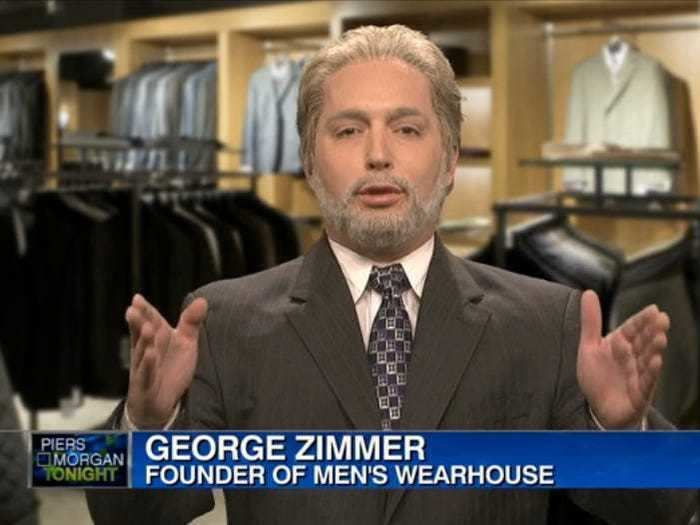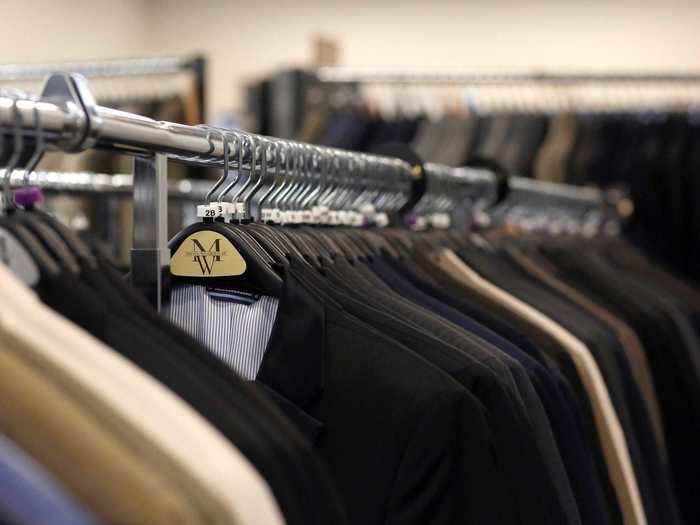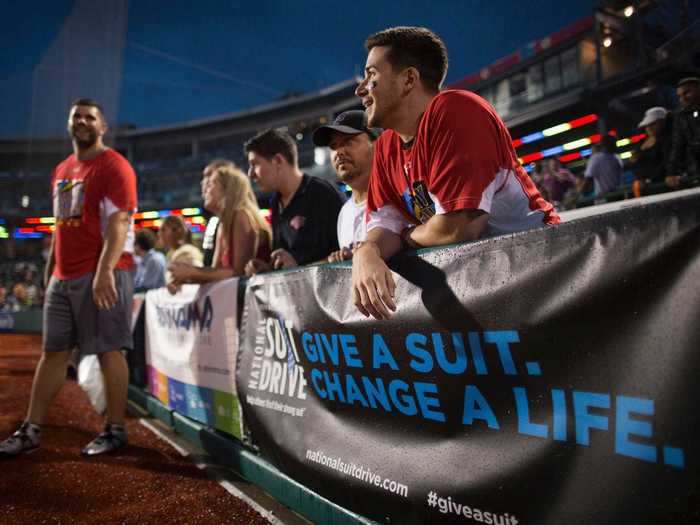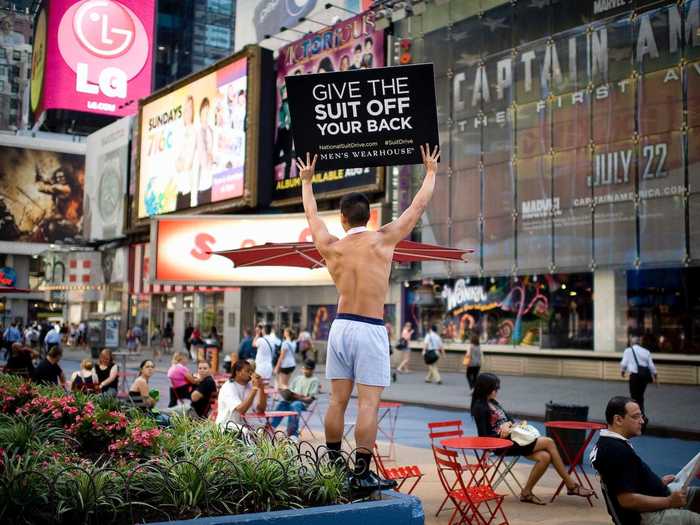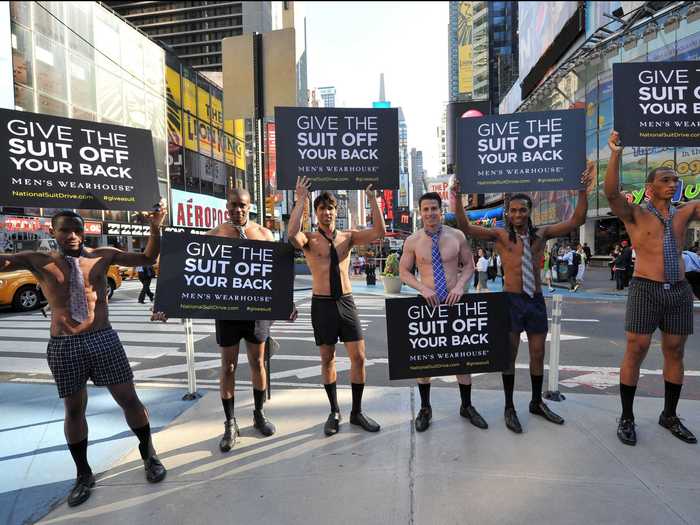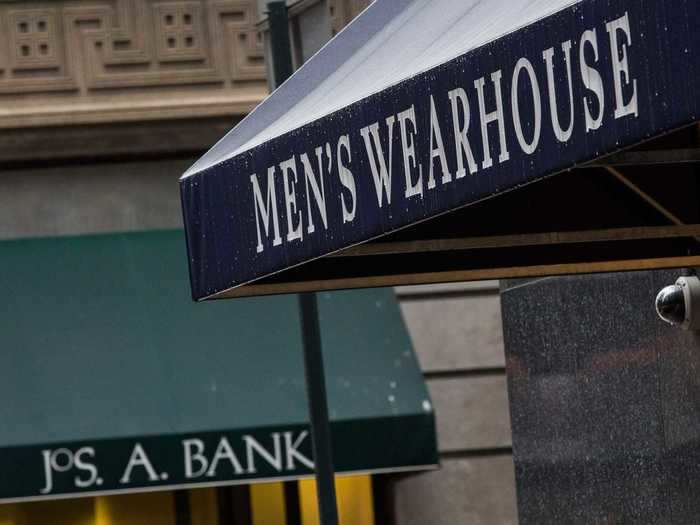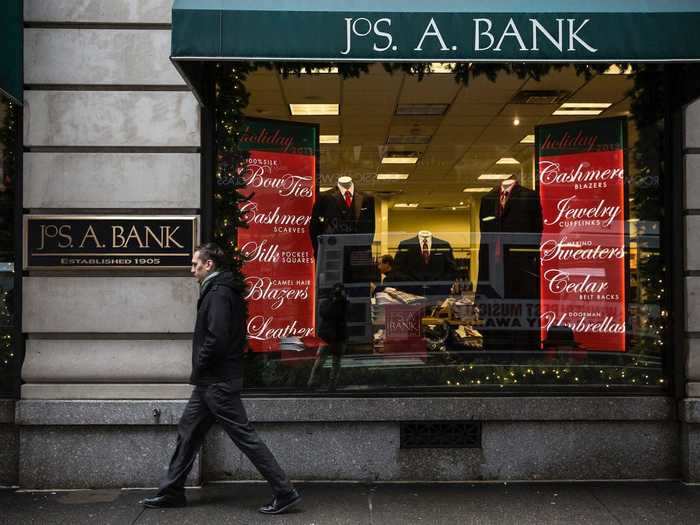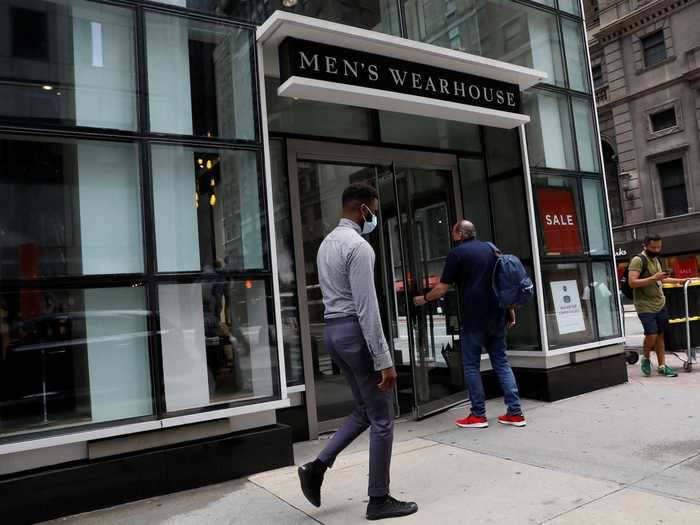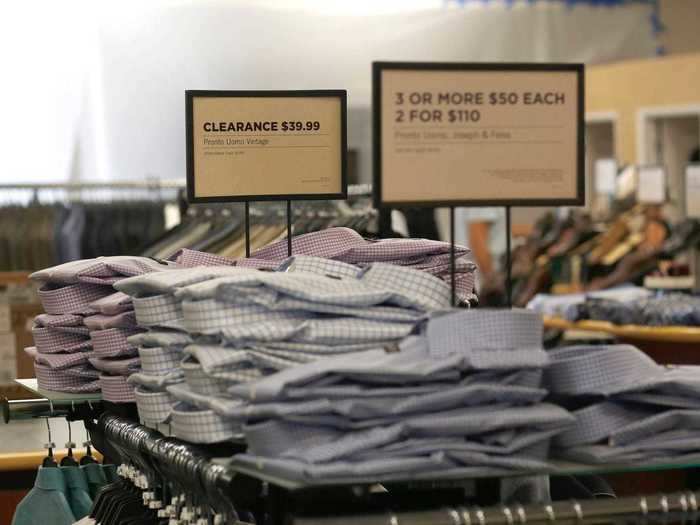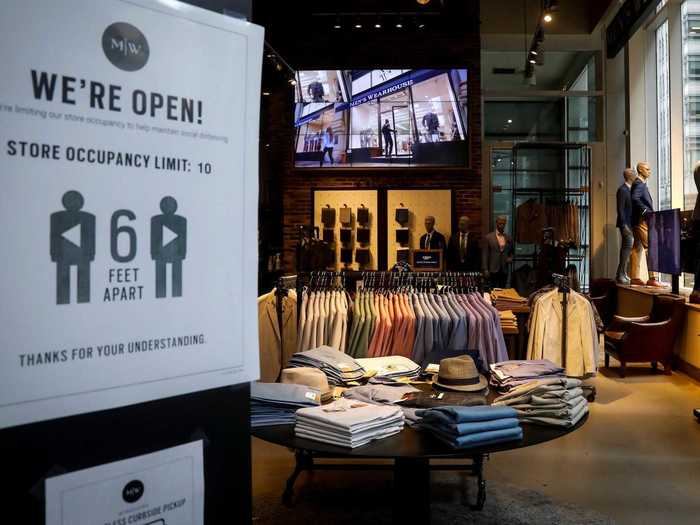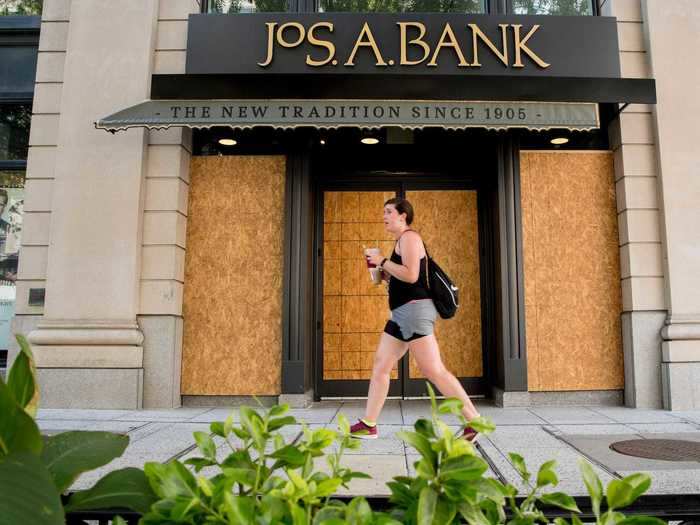- Tailored Brands — the parent company of Men's Wearhouse, Jos. A. Bank, Moores, and K&G Fashion Superstore — filed for Chapter 11 bankruptcy protection on Monday, citing the impact of the coronavirus on the decline of suits and formal wear.
- However, back when the world was still dressing up and going out, Men's Wearhouse has been a go-to destination to help Americans suit up for nearly 50 years.
- Founded in 1973 by George Zimmer, the company rose to prominence in part thanks to its well-known commercials starring the founder himself delivering his trademark line: "You're going to like the way you look: I guarantee it."
- We took a look at the rise and fall of Men's Wearhouse over the decades.
For nearly 50 years, Men's Wearhouse was synonymous with its tailored bargain suits and television commercials promising its customers: "You're going to like the way you look — I guarantee it."
However, with most of the country still homebound amid the coronavirus outbreak, suits and formalwear have gone by the wayside and left the fate of Men's Wearhouse in the balance. On Monday, Tailored Brands — the parent company of Men's Wearhouse, Jos. A. Bank, Moores, and K&G Fashion Superstore —filed for Chapter 11 bankruptcy protection with plans to immediately close 100 stores across the company.
In a note on its website, Tailored Brands attributed the decision to the pandemic, which in addition to temporarily shuttering stores has also shifted consumer demand toward athletic wear and loungewear.
"The coronavirus pandemic has altered the way we live and work. There are fewer in-person meetings, less going out, and postponed wedding celebrations, whereas our clothes are better suited to being out and about. That, in turn, means the need for fewer stores," the company said. "When the world is ready to dress up and go out again, we will be there to serve them."
Back when the world was dressing up and going out, Men's Wearhouse was there to help Americans suit up. Founded in 1973 by George Zimmer, the company grew to become one of the largest menswear chains in the country, even it hit a series of challenges in recent years, including the unceremonious ousting of Zimmer, the onset of the retail apocalypse, and the coronavirus.
We took a closer look at the rise and fall of Men's Wearhouse over the years.
Men's Wearhouse was founded in 1973 by George Zimmer in Houston, Texas.
After graduating from college, Zimmer worked for his father's struggling raincoat business, ultimately taking the knowledge he gleaned as a manufacturing representative to create Men's Wearhouse.
Source: Funding Universe
Zimmer wanted to create a go-to destination for menswear featuring "a full selection of suits, sport coats, sportswear and accessories from top designers." He found quick success at selling them for bargain prices compared to department store competitors.
Today, Men's Wearhouse carries a wide array of brands ranging such as Calvin Klein and Tommy Hilfiger, as well as exclusive offerings from collections like Awearness by Kenneth Cole and Black by Vera Wang.
A display of ties at a Men's Wearhouse store in Pasadena, California in 2013.
REUTERS/Mario Anzuoni
Over the next two decades, Men's Wearhouse rapidly expanded across the country, growing from 12 stores in 1981 to 25 in 1985 and then continuing to multiply. On the heels of its success, the company went public in 1992.
Zimmer managed to carve a niche in men's fashion, transforming Men's Wearhouse "from a single store into a multibillion-dollar empire," wrote Inc's Tom Foster.
After moving the company from Texas to California in the mid-1980s, Zimmer opened a sprawling corporate headquarters and training facility in 1995, developing a multi-day program for new employees called "Suits University."
In turn, Men's Wearhouse became known not only for its low prices but its excellent customer service.
In the second half of the 1990s, Zimmer turned to acquisitions to build his customer base, starting with the brands Kuppenheimer and Joseph & Feiss in 1996. In 1997, he created the "Value Priced Clothing" division with two new lower-priced chains — C&R Clothiers and NAL.
By 1998, the company opened its first store in New York City. The next year, Men's Wearhouse continued its acquisition spree by adding K&G Men's Center and the Canadian-based Moores Retail Group.
During this period, Zimmer started to make a name for himself for his appearances in Men's Wearhouse television advertisements using his trademark line: "You're going to like the way you look — I guarantee it."
Zimmer in a Men's Wearhouse commercial in the 1990s.
YouTube
Zimmer became the face of the brand as a result, appearing in countless commercials over the years.
Zimmer in a Men's Wearhouse commercial in the 2000s.
YouTube
The commercials have even been parodied by the likes of "Saturday Night Live" ...
Former SNL cast member Beck Bennett in a 2013 sketch.
Hulu/NBC "SNL"
... as well as by comedians like Pete Holmes.
Comedian Pete Holmes posing as George Zimmer.
YouTube
In November 2006, Men's Wearhouse bought After Hours Formalwear from Federated Department Stores. Though After Hours was rebranded, it was ultimately folded into Men's Wearhouse as a tuxedo rental service for black tie events.
In the early 2000s, Men's Wearhouse forged a number of philanthropic partnerships, including sponsorships with the United Football League and pledging support at a variety of charitable sporting events.
A celebrity charity softball game in Coney Island sponsored by Men's Wearhouse.
John Minchillo/AP Images for Men's Wearhouse
Such efforts also included the start of the multi-year "Give the Suit Off Your Back" campaign in 2007, which encouraged donations of gently used suits and professional clothes ....
Men's Wearhouse kicks off the 4th Annual National Suit Drive in New York City in 2011.
Rob Bennett/AP Images for Men's Wearhouse
... using the help of a campaign of scantily clothed men.
Associated Press
In 2013, Zimmer — then executive director of the company after passing the chief executive role to Doug Ewert — was unceremoniously ousted by the Men's Wearhouse board of directors after Zimmer "refused to support the team unless they acquiesced to his demands."
"Mr. Zimmer had difficulty accepting the fact that Men's Wearhouse is a public company with an independent board of directors and that he has not been the chief executive officer for two years," the board said in a state issued at the time and published by the Houston Chronicle. "He advocated for significant changes that would enable him to regain control."
Ultimately, Zimmer's tumultuous departure was only a harbinger of more turmoil to come: In October 2013, Men's Wearhouse received a bid to be acquired by Jos. A. Bank, prompting a several month takeover battle between the two companies.
After months of strife, Men's Wearhouse eventually beat out Jos. A. Bank and acquired the brand for $1.8 billion in 2014.
In 2016, the official parent company Tailored Brands was created, including its subsidiaries Jos. A. Bank, Men's Wearhouse, Moores, and K&G Superstore.
Even without Zimmer, Men's Wearhouse tried to maintain the legacy of his whimsical commercials, bringing on celebrity partners like Tan France of "Queer Eye" in 2018.
YouTube
Still, Men's Wearhouse found itself struggling, like many of its peers, against the ongoing retail apocalypse and dealing with large overheard costs, low foot traffic, and declining sales.
When the coronavirus hit, essentially rendering suits obsolete, Men's Wearhouse found itself unable to stay afloat.
A recently reopened Men's Wearhouse store in New York City.
REUTERS/Brendan McDermid
On August 3, Tailored Brands filed for Chapter 11 bankruptcy protection, with plans to immediately close 100 stores, including 33 Men's Wearhouse locations.

